
ADVANCED HUNTING
ON DEER AND ELK TRAILS
Published by Stackpole Books
An imprint of The Rowman & Littlefield Publishing Group, Inc.
4501 Forbes Boulevard, Suite 200, Lanham, Maryland 20706
www.rowman.com
Unit A, Whitacre Mews, 26-34 Stannary Street, London SE11 4AB
Distributed by NATIONAL BOOK NETWORK
Copyright 1954 by Francis E. Sell
Second printing 1959
First Stackpole Books paperback edition 2017
All rights reserved. No part of this book may be reproduced in any form or by any electronic or mechanical means, including information storage and retrieval systems, without written permission from the publisher, except by a reviewer who may quote passages in a review.
British Library Cataloguing in Publication Information Available
The hardback edition of this book was previously cataloged by the Library of Congress as follows:
Library of Congress Cataloging-in-Publication Data
L. C. Catalog Number: 54-7575
LCCN: 54-7575 (cloth)
ISBN 978-0-8117-3668-8 (paperback)
ISBN 978-0-8117-6647-0 (electronic)
 The paper used in this publication meets the minimum requirements of American National Standard for Information SciencesPermanence of Paper for Printed Library Materials, ANSI/NISO 239.48-1992.
The paper used in this publication meets the minimum requirements of American National Standard for Information SciencesPermanence of Paper for Printed Library Materials, ANSI/NISO 239.48-1992.
Printed in the United States of America
DEDICATION
To EthelTrail Partner.
ACKNOWLEDGMENTS
I wish to thank the editors of Field and Stream, American Rifleman, Outdoor Life, and American Woodsman for permission to use material of mine which first appeared in those magazines.
Listings of Eastern Whitetail deer food preferences is used with the permission of the United States Fish and Wildlife Service. Those on Mule Deer are used with the permission of the California Department of Fish and Game. Other material was supplied by the Oregon Game Commission.
I am especially indebted to Eugene Burns for the long autumn evenings discussions in front of my fireplace when the thought of this book was taking shapehis invaluable editorial criticism when I was putting it down on paper.
PART I
The Game
PART II
Techniques and Tools
PART III
Practical Aspects of Big Game Hunting
CHAPTER 1
BIG GAME HIGHWAYS
If you have been on the short end of the stick for almost a week of steady hunting, then see two sleek bucks within a few hours, you would have understood something of Hals excitement.
He had headquartered at my cabin and hunted steadily for five days without seeing anything except does and fawns mooching apples in my orchard late in the evenings.
One day when he returned in mid-afternoon, tired, discouraged, ready to call it a season, I suggested he leave his rifle and return to the woods, not to hunt, but to get a more objective viewpoint to the problem of taking deer in heavy cover. This problem the most experienced big game hunter would do well to go over again.
Following directions, he walked about three-quarters of a mile into the woods to a criss-cross of broken brushy ridges where I knew most of the deer bedded which used the old orchards and briar openings about the place. Here he was to wait until about two hours of shooting light was left, then slowly make his way out, always keeping to deer trails.
Wish you didnt have that sprained ankle, he grumbled. Maybe we could drive to each other and get something. But he went, and he followed directions. Two hours and eight deer later he was excited and slightly baffled by the turn of events.
Now, as he stood in front of my fireplace, just past good shooting light, his hands trembled as he touched match to cigarette. I saw more deer in the past three hours than I have seen during the last three seasons! he exclaimed. A three pointer was less than forty feet away on that deer trail between those cedar thickets and the Scott Orchard. I saw two does and four fawns on the Divide. A forked horn was on the Homestead Run trail, stepping as if he were walking on eggs.
I could have filled on either of those bucks, if I had taken my rifle with me. Neither was moving fast. Ranges are a deer hunters dream.
Deer! And touched with some magic which made them move slow, hesitate, just asking for some hunter to take his pick. He could scarcely wait until morning.
Next day he filled his tag with a fat three pointer.
Easiest shooting I ever had! he said as he dropped his heavy burden at my cabin door near noon. Honestly, he couldnt have been more than eighty feet away. I was taking it easy along a deer trail leading from that jumble of thickets on Dead Hill Ridge about eight oclock this morning, when this old lunker stepped out of a side-trail directly in front of me.
That buck was a dramatic introduction to Big Game Highways.
Big game fields are covered with these well planned wilderness routes. There is no forest activity which isnt in some way directly tied in with them. When big mule deer start from their high summer range each autumn, migrating into the foothills for the winter, sometimes moving as much as a hundred miles to winter ranges, it is the Big Game Highways they use. So constant and unvarying are these routes that they are often cut deep by countless seasonal migrations.
Elk coming out of Oregons high Umatillas follow the same pattern of trails. So do the elk moving down from Washingtons Olympic Mountains when the snow piles high on their summer ranges.
They may lay over for a day or week in some favored locality rich in browse, if the weather moderates. But they always come together again to travel Big Game Highways winding down from their summer range toward sheltered feeding ground in the foothills.
Game actions become obvious and predictable once you understand the specific purpose, not only of migratory routes, but those used the year around by big game which remain on the same ground year around. But you must know feeder trails in cover, escape routes and pathways leading to bedding grounds.
Hunting methods predicated on this intimate knowledge of Big Game Highways and their use will make it easy for you to take big game on bare ground or in snow. It is equally effective whether you drive deer, still hunt alone or with a partner. It will work equally well in west coast forests, Wisconsin woods, Upper Michigan or Maine; any place where there is big game and woods to shelter them. I know that sounds like a big game hunters pipe dream, but it will be proven to your satisfaction in every particular.
During the last ten seasons, I have never spent a day in deer cover without seeing anywhere from three to as many as fifteen deer. As for easy shooting, I have taken ten deer with sixteen shots, getting fifteen hits.
Still hunting elk, I have taken the last four killed with eight shots, getting seven solid hits. And with the exception of a four point bull killed across a canyon at a range of two hundred fifty yards, all were taken at average woods distances of fifty to sixty yards. Most of the deer were taken at even shorter ranges.
Such a record involves a system of hunting which puts game in front of the rifle at ranges where one has everything in his favor. No magic or superior woodcraft is involved. The technique is so simple that even the tyro hunter can use it.
Last autumn my partner and I used a bit of this fundamental knowledge of deers reaction to Big Game Highways to work the old shell game on a beautiful four point buck.
It was an Indian Summer day when we began our hunt. A ghost of East wind haunted the crimsoned vine-maple. The overgrown logging slash looked like an artists palette with blobs of crimsons, browns and vivid greens. Small patches of frost rime still sparkled on shady side of hills.
Next page

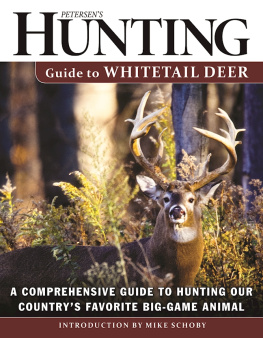
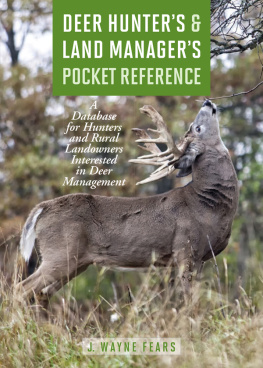
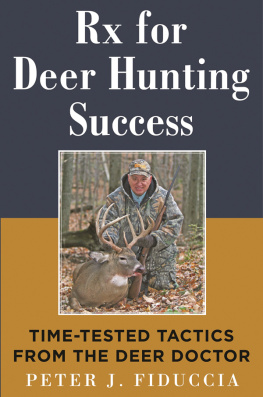
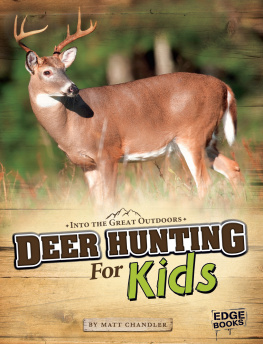
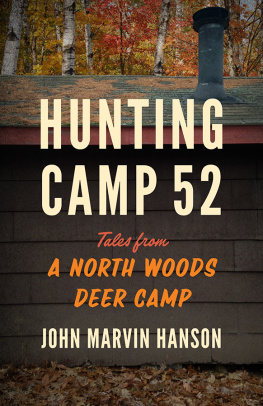
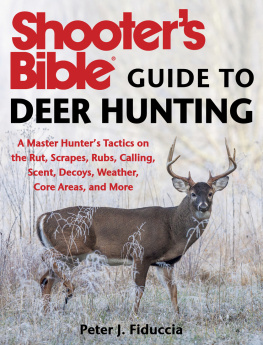

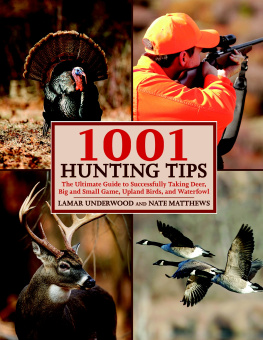
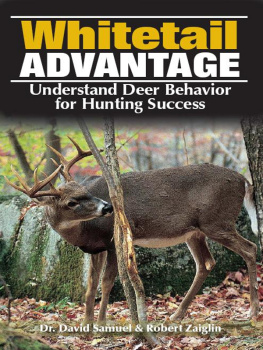
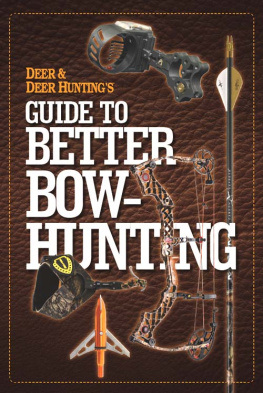

 The paper used in this publication meets the minimum requirements of American National Standard for Information SciencesPermanence of Paper for Printed Library Materials, ANSI/NISO 239.48-1992.
The paper used in this publication meets the minimum requirements of American National Standard for Information SciencesPermanence of Paper for Printed Library Materials, ANSI/NISO 239.48-1992.